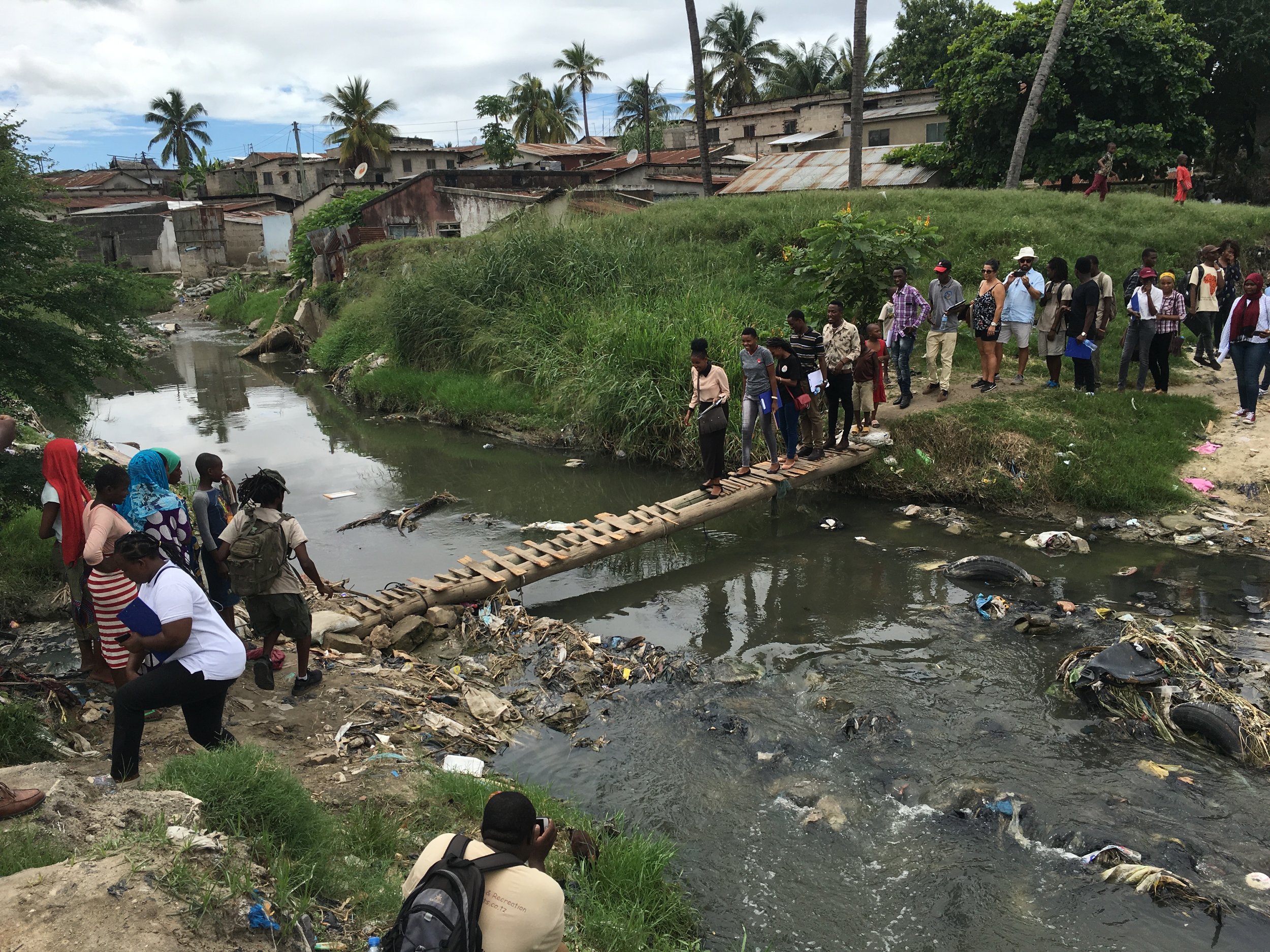Urban Walk #4 Makumbusho and Tandale
by Zachariah DeGiulio
On Wednesday, May 1, CityLab embarked on the fourth walk in its Urban Walk series to the neighborhoods of Makumbusho and Tandale in the Kinondoni Municipality of Dar es Salaam. This walk differed from previous Urban Walks in that it included nearly 50 participants, mostly undergraduate students from Ardhi University majoring in architecture, urban planning, landscape architecture, and interior design.
Makumbusho and Tandale provide an interesting backdrop for the Walk, given both their convenient location and distance to the City Center. These neighborhoods support the livelihoods of many different classes, which is becoming a point of contention now that wealthier residents have begun moving into the neighborhood that was once mostly lower-income settlements. Coupled with the ongoing process of gentrification, the neighborhoods’ proximity to the Ng’ombe River makes it extremely vulnerable to flooding. The strategic location and its flooding vulnerability has also made the neighborhoods the focus of multiple large infrastructure projects, often proposed without the consensus of local residents, executed through the demolition of homes around the river. According to residents, this has done little to alleviate the neighborhood of its flooding issues.
CityLab partner Afriroots, who collaborated with CityLab in leading the Urban Walk, has longstanding ties to the communities visited, however they had never led a walk with a group this size. Bringing a mass of outsiders to a place to learn from longstanding citizens about sensitive topics including the gentrification of the neighborhood and challenges associated with large-scale infrastructure interventions is difficult and oftentimes borders on problematic. However, Afriroots’ relations with the communities, and the fact that the group overwhelmingly consisted of Tanzanian students, made the Walk enlightening and exciting for both visitors and residents. The approach to the Walk also differed from the previous fieldwork students at Ardhi performed. Residents were excited to converse in Kiswahili, uninhibited by a translator (often the format of these walks) about both the difficulties and triumphs of a historic neighborhood in Dar es Salaam.
During the walk, the reason for residents’ hesitation to outsiders becomes evident. On one level, the neighborhoods’ proximity to downtown Dar es Salaam makes for an enticing place for upper middle class and wealthy Tanzanians to cheaply purchase plots of land and build large single-family houses enclosed by tall walls. Often these new residents do little to contribute to the social and economic vitality of the neighborhood. For example, students met with a local restaurant owner who has been living and working in Makumbusho for almost 20 years. After the sale of her family home a couple of years ago, she has struggled to make ends meet, experiencing rent increases both at her restaurant and new rental house, and decreased sales because of the newer residents’ lack of interaction with the surrounding neighborhood.
The neighborhood, which has a long history of urban development, has grown significantly since the days of Tanzania’s first President, Julius Nyerere, creating a unique juxtaposition of socialist-era housing, unplanned low-income self-built housing, and upper-middle class compounds.
After the Walk, students will continue reflecting on and analyzing their time in Makumbusho and Tandale, producing reflections that will culminate in a final exhibition that will be shown both within and outside the communities, utilizing the students’ multifaceted skills at visual representation to produce a complex, nuanced analysis of the neighborhood, moving beyond the technocratic rationality that often characterizes urban projects.





